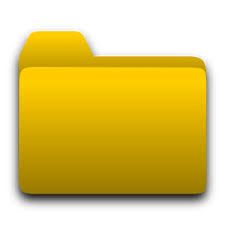file
英 [faɪl]
美 [faɪl]
- n. 文件;档案;文件夹;锉刀
- vt. 提出;锉;琢磨;把…归档
- vi. 列队行进;用锉刀锉
- n. (File)人名;(匈、塞)菲莱
使用频率:

记忆方法
为了记忆单词“file”,可以使用一个关联图像的方法。想象你将一些文件整齐地放在一个文件夹(file)里。这个文件夹(file)是纸质的,形状扁平,用于存放文件。通过这种视觉联想,你可以记住“file”的意思是指文件夹或者把文件整理在一起的行为。
以上内容由AI生成, 仅供参考和借鉴
中文词源
file 文件
来自拉丁语filum,线,词源同 filament. 引申词义文件,文献,因古代文献多用线缝合。
file 锉刀来自PIE*peig, 砍,切,字母g脱落,词源同pigment, picture. 用做工具名。
英语词源
- file
-
file: The file for smoothing and rubbing [OE] and the file for storing things in [16] are quite different words. The former comes from a prehistoric Germanic *fikhalā (source also of German feile and Dutch vijl), which goes back ultimately to Indo-European *pik-, *peik-, denoting ‘cut’. The latter, on the other hand, comes from Old French fil, a descendant of Latin filum ‘thread’, which was applied to a piece of string or wire suspended from two points and used for hanging documents and records on for easy reference.
As methods of document storage and retrieval became more sophisticated, the word file followed them. The later file ‘(military) column’, first recorded at the end of the 16th century, probably represents a reborrowing from French, but it is ultimately the same word. Fillet [14] originated as a diminutive form of Latin filum.
=> filigree, fillet - file (v.1)
- "place (papers) in consecutive order for future reference," mid-15c., from Old French filer "string documents on a thread or wire for preservation or reference" (15c.), earlier "to spin thread," from fil "thread, string" (12c.), from Latin filum "a thread, string; thread of fate; cord, filament," from PIE *gwhis-lom (cognates: Armenian jil "sinew, string, line," Lithuanian gysla "vein, sinew," Old Church Slavonic zila "vein"), from root *gwhi- "thread, tendon." The notion is of documents hung up on a line in consecutive order for ease of reference.
File (filacium) is a threed or wyer, whereon writs, or other exhibits in courts, are fastened for the better keeping of them. [Cowel, "The Interpreter," 1607]
Methods have become more sophisticated, but the word has stuck. Meaning "place among the records of a court or office" is from 1510s; of newspaper reporters sending in stories, 1954. Intransitive sense "march in a line (as soldiers do) one after another" is from 1610s. Related: Filed; filing. - file (n.2)
- metal tool for abrading or smoothing, Old English feol (Mercian fil) "file," from Proto-Germanic *fihalo "cutting tool" (cognates: Old Saxon fila, Old High German fila, Middle Dutch vile, Dutch vijl, German Feile), probably from PIE *peig- (1) "to cut, mark by incision" (cognates: Old Church Slavonic pila "file, saw," Lithuanian pela "file;" see paint (v.)). Century Dictionary (1906) lists 60 named varieties of them.
- file (n.1)
- 1520s, "string or wire on which documents are strung," from French file "a row" (15c.), noun derived from Middle French filer "string documents; spin thread" (see file (v.1)). The literal sense explains why from the beginning until recently things were generally on file (or upon file). The meaning "collection of papers systematically arranged for ready reference" is from 1620s; computer sense is from 1954. The sense "row of persons or things one behind another" (1590s) is originally military, from the French verb in the sense of "march in file." Meaning "line of squares on a chessboard running directly from player to player" is from 1610s.
- file (v.2)
- "to smooth or abrade with a file," early 13c., from Old English filian, from the source of file (n.2). Related: Filed; filing.
权威例句
- 1. Substantial numbers of rank and file members ignored their union's advice.
- 有相当一部分普通员工不理睬工会的建议。
- 2. I looked your address up in the personnel file.
- 我在人事档案里找到了你的地址。
- 3. We were walking in single file to the lake.
- 我们正排成一列朝湖边走去。
- 4. There was widespread support for him among the rank and file.
- 那些普通职员们都普遍支持他。
- 5. The FBI kept a voluminous file on Pablo Picasso.
- 联邦调查局保存了有关巴勃罗·毕加索的大量档案。
